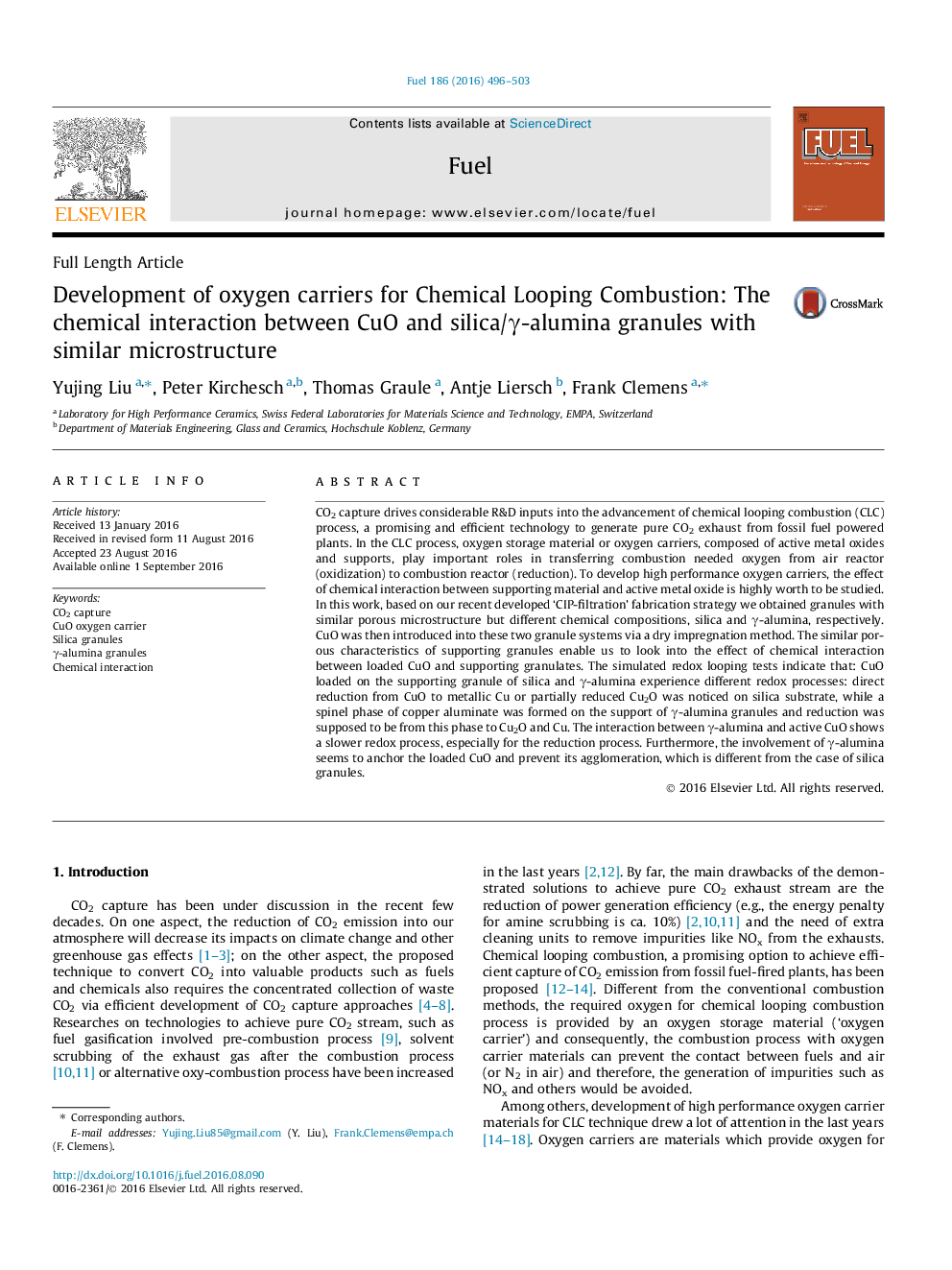| کد مقاله | کد نشریه | سال انتشار | مقاله انگلیسی | نسخه تمام متن |
|---|---|---|---|---|
| 6476131 | 1424978 | 2016 | 8 صفحه PDF | دانلود رایگان |

CO2 capture drives considerable R&D inputs into the advancement of chemical looping combustion (CLC) process, a promising and efficient technology to generate pure CO2 exhaust from fossil fuel powered plants. In the CLC process, oxygen storage material or oxygen carriers, composed of active metal oxides and supports, play important roles in transferring combustion needed oxygen from air reactor (oxidization) to combustion reactor (reduction). To develop high performance oxygen carriers, the effect of chemical interaction between supporting material and active metal oxide is highly worth to be studied. In this work, based on our recent developed 'CIP-filtration' fabrication strategy we obtained granules with similar porous microstructure but different chemical compositions, silica and γ-alumina, respectively. CuO was then introduced into these two granule systems via a dry impregnation method. The similar porous characteristics of supporting granules enable us to look into the effect of chemical interaction between loaded CuO and supporting granulates. The simulated redox looping tests indicate that: CuO loaded on the supporting granule of silica and γ-alumina experience different redox processes: direct reduction from CuO to metallic Cu or partially reduced Cu2O was noticed on silica substrate, while a spinel phase of copper aluminate was formed on the support of γ-alumina granules and reduction was supposed to be from this phase to Cu2O and Cu. The interaction between γ-alumina and active CuO shows a slower redox process, especially for the reduction process. Furthermore, the involvement of γ-alumina seems to anchor the loaded CuO and prevent its agglomeration, which is different from the case of silica granules.
Journal: Fuel - Volume 186, 15 December 2016, Pages 496-503